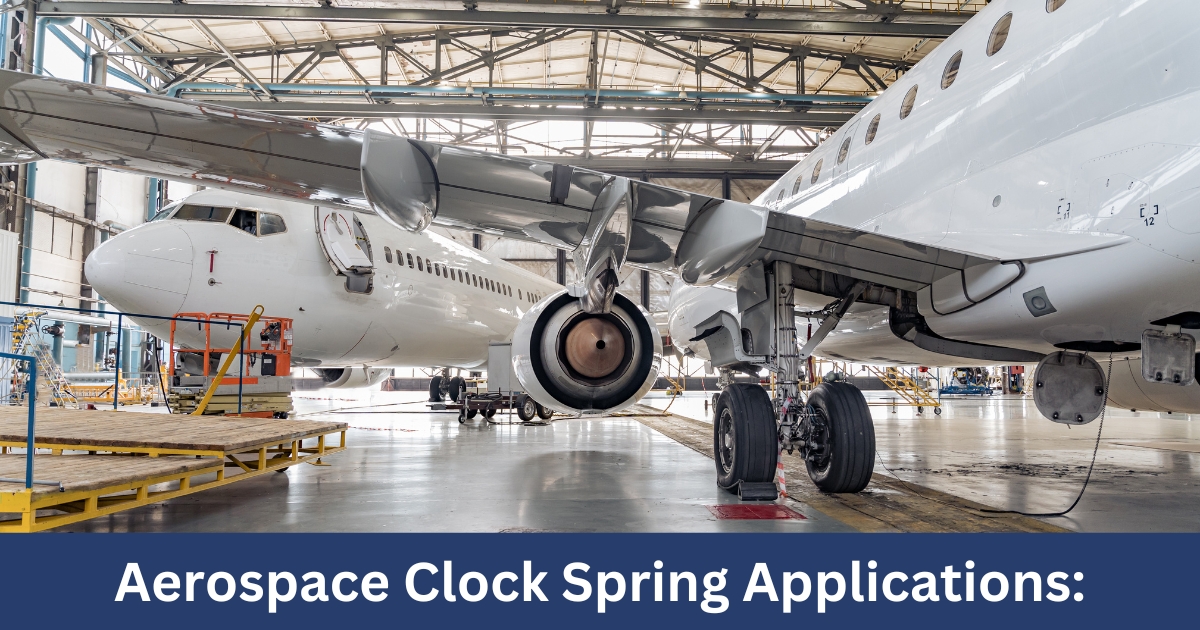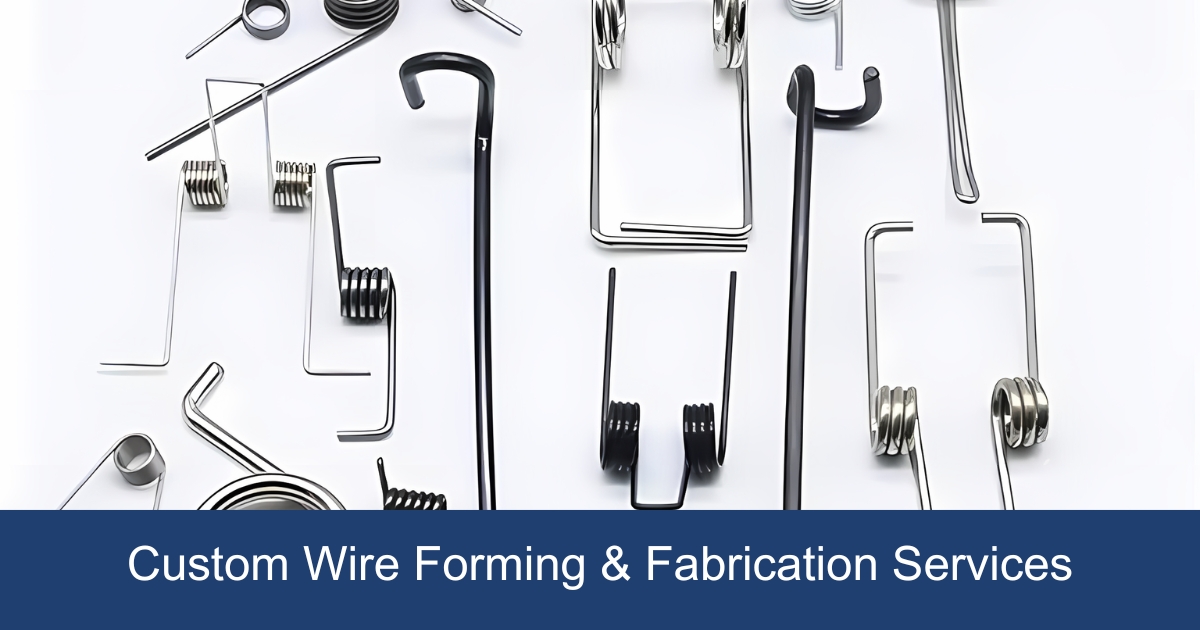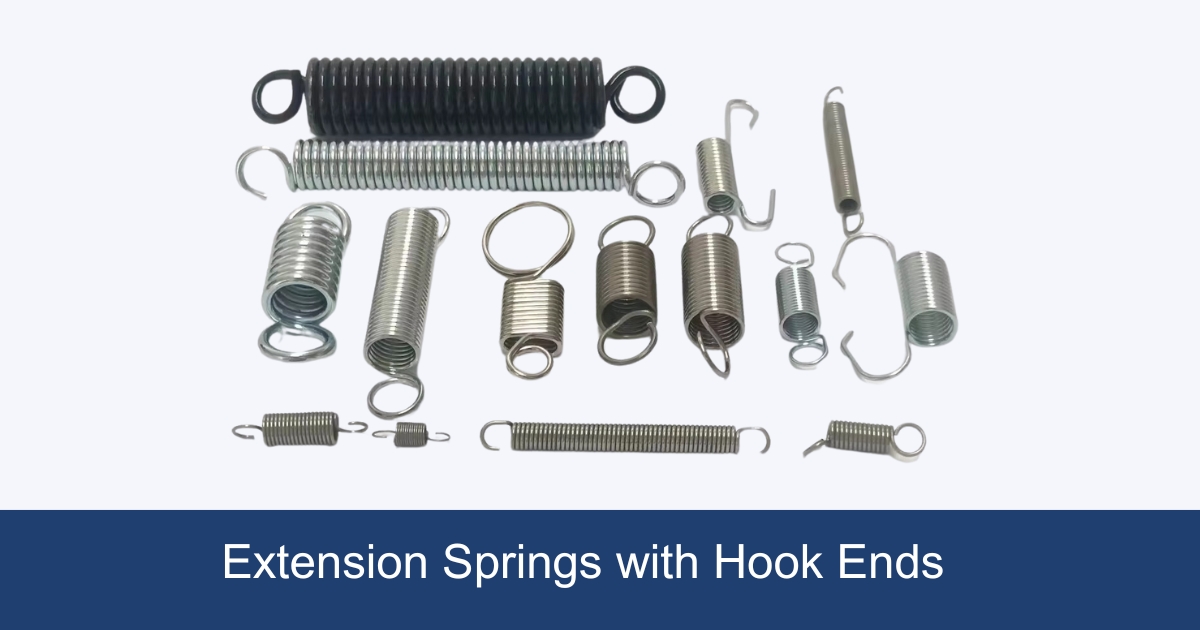Engineers choose between tension and compression springs based on the mechanical forces they need to manage. Tension springs resist pulling forces, storing energy during extension, and are used in applications like garage doors and trampolines. These springs often have closed loops or hooks for secure attachment, ensuring stability in structures.
Compression springs handle compressive stress, compressing to store energy before pushing back. They have an open-coil design, ideal for automotive suspensions, mattresses, and pens. The design differences highlight their unique performance under load conditions, optimizing force management in various mechanical systems.
Understanding Compression And Tension Springs
Mechanical systems use different types of springs to manage energy in everyday items, from pens to car suspensions. Tension springs resist pulling forces, crucial for trampolines and garage doors, storing and releasing energy as needed.
Their loops enable secure attachment, maintaining tension and position. In contrast, compression springs, with an open-coil design, absorb pushing forces, stabilizing structures like car suspensions. Made from durable materials like stainless steel, they cushion shocks effectively, enhancing energy transfer and system stability.
The resilience and longevity of these springs hinge on material choice and design factors like wire diameter and helix shape. When implemented effectively, the interplay of these components optimizes a spring’s capability to store mechanical energy, withstand stress, and return to its original shape. They are indispensable in diverse applications, such as automotive systems and writing instruments.
How Torsion Mechanics Work
Torsion mechanics involve twisting forces to manage energy, differing from traditional linear springs. Torsion springs use rotational motion to transfer power efficiently, essential in applications needing consistent rotational support. For example, in garage doors, tightly wound torsion springs store energy, which smoothly powers door movements as they unwind. These springs also support heavy door hinges and automotive seat recliners, providing reliable resistance and stability.
Think of how springs fulfill specific functions: tension springs provide tensile resistance, essential for maintaining stability in assemblies, like trampolines. Meanwhile, compression springs resist squeezing forces, crucial in shock absorption, valuable in devices like mattresses or car suspensions.
Twisted Metal Components
- Torsion springs twist to gather energy, essential for rotational systems.
- Garage doors utilize coil springs, efficiently using stored energy for smooth operation.
- Tension springs maintain assembly stability by resisting tensile forces.
- Compression springs absorb impacts effectively, adaptable to various temperatures.
Key Differences In Spring Types
Exploring mechanical systems unveils the distinct features of springs, vital for effective functionality. From the exploration of torsion mechanics, attention shifts to the attributes that distinguish styles like compression, tension, and extension springs. Each design caters to distinct tasks under various forces.
Structural Design Characteristics
- Tension Springs: Crafted with closed-ended loops, these springs enable secure attachment and excel in storing energy during extension. They efficiently resist tensile forces, ideal for securing components together. Common applications include trampolines, where these springs keep assemblies stable.
- Compression Springs: Characterized by an open-coil design, these springs resist compressive forces. Once compressed, they expand, providing stability. Essential in car suspensions, they act like shock absorbers, managing multiple impacts and supporting smooth rides.
- Extension Springs: These springs exhibit a coil similar to a helical form, designed for resisting tensile forces when stretched. They’re essential for systems requiring a return to their original position after force removal. Valued in applications demanding such spring stability.
Choosing The Right Spring For Your Needs
Each spring type serves a unique function, addressing tasks like pushing, stretching, or twisting. Selecting the right spring for a project requires understanding these roles and the forces involved. Compression springs resist compressive forces, providing stability in car suspensions or mattresses. Tension springs handle tensile forces, pulling on components and ensuring reliable performance in structures like garage doors.
Material selection significantly influences a spring’s performance and longevity. Steel and stainless steel, along with specialized alloys, are common choices. This choice affects a spring’s ability to handle distinct forces and environmental factors like temperature shifts. It ensures the reliability and effectiveness of springs, especially when dealing with helical coiled designs. These springs store energy under applied loads and return to their original shape once the load is removed, evident in garage doors.
| Type of Spring | Function |
|---|---|
| Compression Spring | Resists compressive forces; used in automotive suspensions and mattresses. |
| Tension Spring | Withstands tensile forces; used in structures like garage doors. |
| Material Selection | Impacts performance and durability; critical in varying temperatures. |
Applications Of Helical Springs
Enhancing Vehicle Performance
In the automotive industry, helical springs play an essential role in improving vehicle performance. By incorporating helical compression springs into vehicle suspensions, these springs effectively manage shock absorption, smoothing out bumpy terrains. This ensures a more comfortable ride by counteracting rough surfaces.
Automotive Interiors And Convenience
Tension springs enhance ease of use in automotive interiors, enabling seamless operations such as seat height adjustments and door mechanics. This results in greater user satisfaction through improved functionality. These springs demonstrate their versatility, catering to both mechanical demands and consumer comfort.
Consumer Products And Everyday Comfort
The usefulness of helical springs extends beyond automotive applications, finding significant application in consumer goods. For instance, compression springs in mattresses provide robust support and enhance durability for a restorative sleep experience. This combination of strength and flexibility makes them a crucial component of everyday products.
Smaller Devices And Versatility
Even in smaller devices like pens, helical springs demonstrate remarkable adaptability. By responding to the tension and compression forces exerted, these springs enable efficient functionality, illustrating their indispensability across industries. Their unique properties ensure they remain integral to both engineered systems and everyday uses.
The Role Of Spring Design In Energy Storage
Helical springs demonstrate versatility, particularly in energy storage, with open-coil and closed-loop designs efficiently storing and releasing energy for industrial use. Closed-loop springs ensure stability and mechanical energy retention, balancing tension in static and dynamic systems like garage doors. Open-coil springs, designed for compressive forces, are vital in automotive shock absorbers, enhancing energy retention and impact damping.
Material choice, such as steel or stainless steel alloys, affects performance, ensuring springs endure stress and temperature changes. This durability is crucial in applications like trampolines or heavy-load machinery.
Spring Architecture
- The architecture of a spring affects its ability to store energy, impacting both retention and release capabilities.
- Closed-loop tension springs are designed to keep balance, making them essential for stable mechanisms.
- Open-coil compression springs play a critical role in absorbing impacts and managing compressive stresses.
- Structural arrangements determine how energy gets managed, ensuring alignment with application needs for peak performance.
Materials Used In Spring Manufacturing
The detailed structure of springs illustrates how the correct selection of materials impacts their efficiency and adjustability. Materials convert design concepts into functional solutions by affecting energy conservation and steadiness.
Linking Design to Material Choice
The strength and efficiency of springs, whether a tension spring or compression spring, result from the bond between materials and design. These materials determine both the lifespan and the precise execution in roles such as energy conservation and stress handling.
Categorization of Spring Materials
Steel: Known for its strength and affordability, steel continues to be fundamental in spring fabrication. From car suspension systems to household mattresses, its extensive use highlights its essential role. Its ability to resist compressive forces adds to its widespread preference.
Stainless Steel: With superior resistance to corrosion and high temperatures, stainless steel fits well in challenging conditions. Even with possible increased expenses, its durability and resistance ensure its suitability for specialized uses, proving its value. Its enduring nature comes from its resistance to tensile forces.
Properties and Suitability for Applications
Material characteristics determine a spring’s suitability for various applications. Torsion springs, used in garage doors and vehicle interiors, leverage tensile dynamics with metals like copper alloys to maintain function under stress.
These materials help springs revert to their original shape once force is released, ensuring reliability. By effectively managing stress and adjusting tension, springs deliver consistent performance across multiple sectors. Careful material selection allows springs to adapt and excel in diverse mechanical settings, confirming their broad utility.
The Impact Of Stress On Spring Performance
Pairing the correct materials with application demands is crucial for assessing stress effects on springs. Performance and lifespan of springs are directly impacted by stress factors, which significantly determine their longevity and effectiveness. The frequency of use and environmental settings, such as temperature and humidity, play significant roles in determining a spring’s lifespan.
Spring Response to Tension and Compression
Springs exposed to tensile and compressive forces effectively store and release energy. For example, springs designed with closed-ended loops excel in managing tension, commonly used in devices like garage door systems and trampolines. Conversely, open-coil springs employ compression resistance, making them essential in automotive suspension systems and other mechanical setups that require robust energy buffering.
The Importance of Material Selection
The material choice in spring manufacturing dictates their endurance and stress recovery. Steel, for instance, offers the strength to resist both compressive and tensile forces. Environmental factors, such as temperature fluctuations, can hasten fatigue and risk failure. Using materials that tolerate these conditions ensures springs retain energy absorption, shape, and consistent performance.
Ensuring Spring Longevity
- Frequency and environment play a crucial role in affecting the durability and effectiveness of springs.
- Springs subjected to tensile force are integral to the functionality of applications like garage doors and trampolines.
- Compression-focused spring structures are adept at handling scenarios requiring impact resistance, such as car suspensions.
- Choosing materials like steel is pivotal to enduring stress and harsh conditions, delivering reliable performance.



